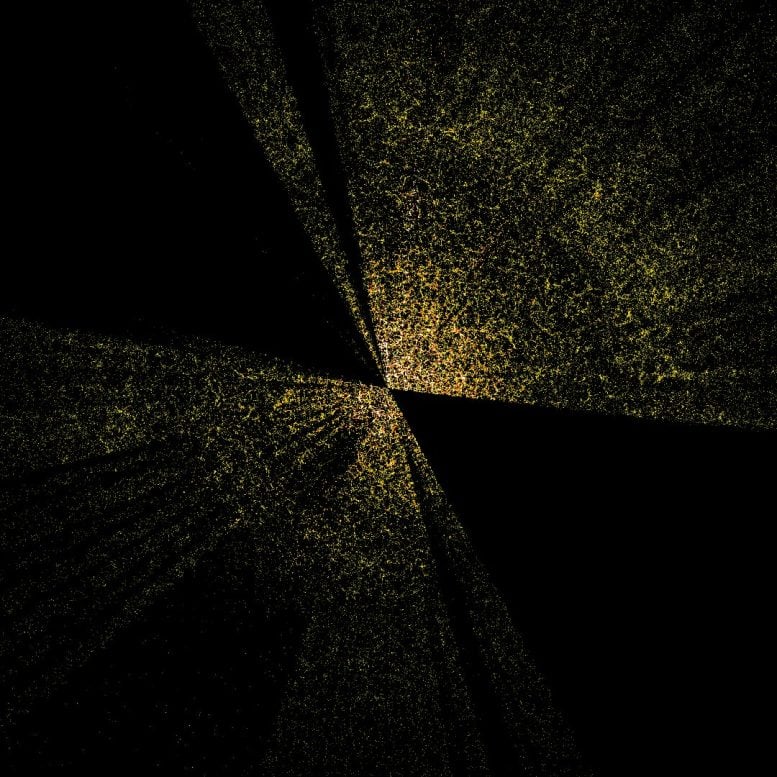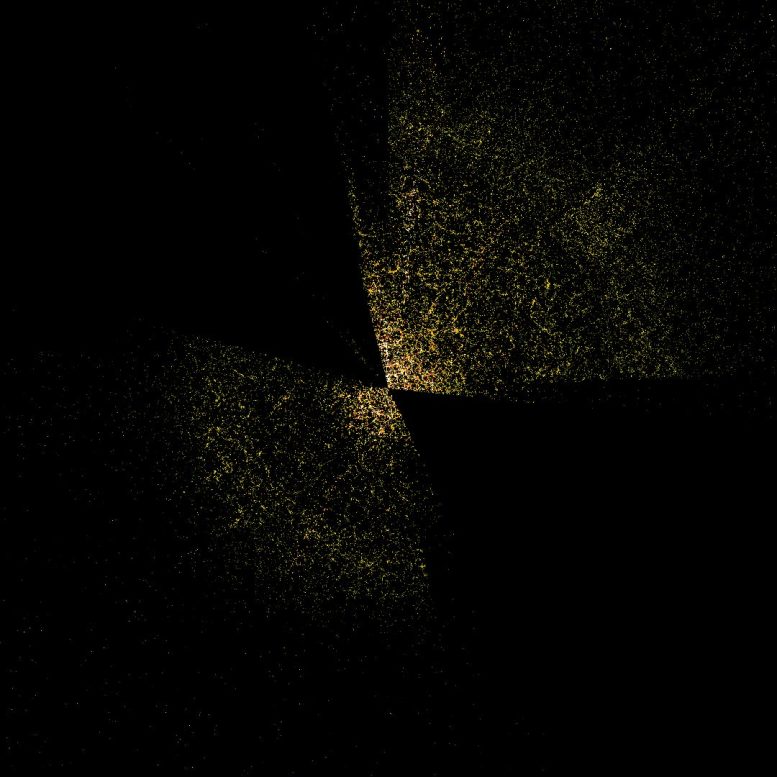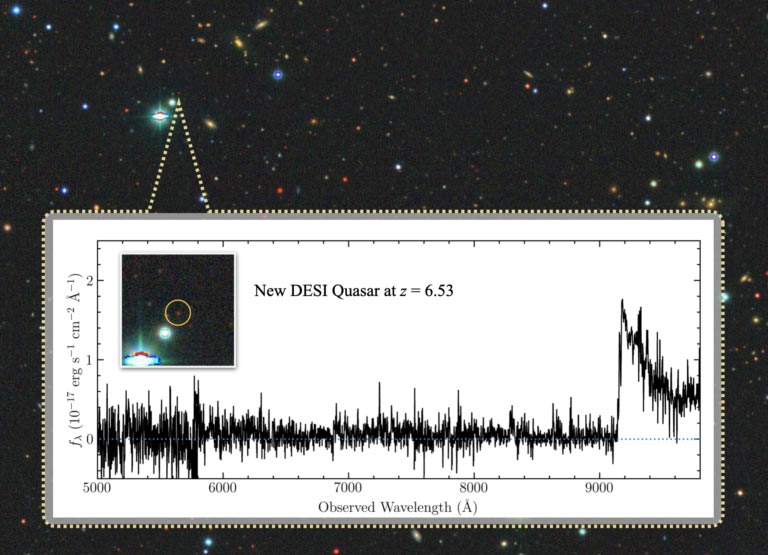DESI’s three-dimensional “CT scan” of the Universe. The earth is in the lower left, looking out over 5 billion light years in the direction of the constellation Virgo. As the video progresses, the perspective sweeps toward the constellation Bootes. Each colored point represents a galaxy, which in turn is composed of hundreds of billions of stars. Gravity has pulled the galaxies into a “cosmic web” of dense clusters, filaments and voids. Credit: D. Schlegel/Berkeley Lab using data from DESI
The Dark Energy Spectroscopic Instrument (
A slice through the 3-D map of galaxies from the completed Sloan Digital Sky Survey.

A slice through the 3-D map of galaxies from the first few months of the Dark Energy Spectroscopic Instrument (DESI; right). The earth is at the center, with the furthest galaxies over 10 billion light years away. Each point represents one galaxy. This 2D slice of the 3D DESI map shows only about 800,000 of the 7.5 million galaxies currently surveyed, which is itself just a fraction of the 35 million galaxies that will be in the final map. Credit: D. Schlegel/Berkeley Lab using data from DESI
But work on DESI itself didn’t end once the survey started. “It’s constant work that goes on to make this instrument perform,” said physicist Klaus Honscheid of Ohio State University, co-Instrument Scientist on the project, who will deliver the first paper of the CosmoPalooza DESI session. Honscheid and his team ensure the instrument runs smoothly and automatically, ideally without any input during a night’s observing. “The feedback I get from the night observers is that the shifts are boring, which I take as a compliment,” he said.
But that monotonous productivity requires incredibly detailed control over each of the 5000 cutting-edge robots that position optical fibers on the DESI instrument, ensuring their positions are accurate to within 10 microns. “Ten microns is tiny,” said Honscheid. “It’s less than the thickness of a human hair. And you have to position each robot to collect the light from galaxies billions of light-years away. Every time I think about this system, I wonder how could we possibly pull that off? The success of DESI as an instrument is something to be very proud of.”
Seeing dark energy’s true colors
That level of
A new quasar discovered using DESI gives a glimpse of the universe as it was nearly 13 billion years ago, less than a billion years after the Big Bang. This is the most distant quasar discovered with DESI to date, from a DESI very high-redshift quasar selection. The background shows this quasar and its surroundings in the DESI Legacy imaging surveys. Credit: Jinyi Yang, Steward Observatory/University of Arizona

